
Have you ever been stranded on the side of the road with a dead battery? 🚗💀 It’s a frustrating experience that many drivers face, but the culprit might not be what you think. While a faulty battery is often blamed, the real powerhouse behind your vehicle’s electrical system is the alternator.
This unsung hero of your car’s engine bay plays a crucial role in keeping you on the move. From powering your headlights to charging your smartphone, the alternator is the beating heart of your vehicle’s electrical system. But how much do you really know about this vital component? 🤔
In this comprehensive guide, we’ll dive deep into the world of alternators. We’ll explore their basic function, help you recognize the telltale signs of a failing unit, and provide expert tips on maintenance and replacement. Whether you’re a curious car owner or a budding mechanic, buckle up as we take you on an electrifying journey through the ins and outs of alternators! 🔧⚡
Visit website: Autobiography Zone
Understanding Alternator Basics
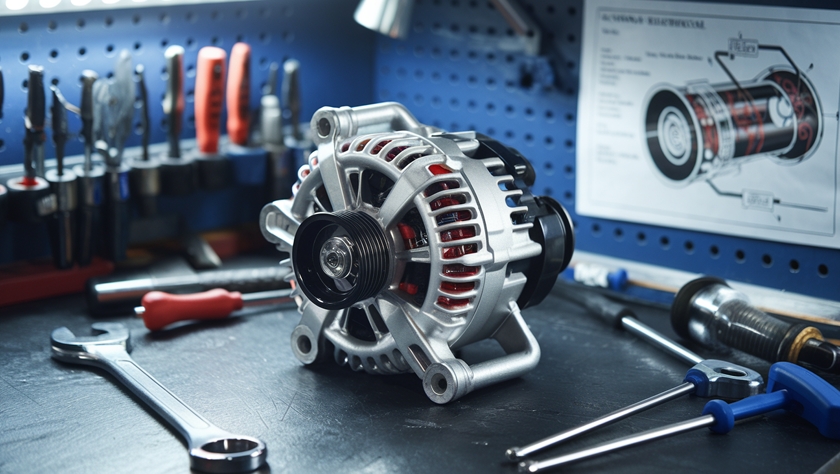
What is an alternator and its purpose
An alternator is a crucial component of a vehicle’s electrical system, responsible for generating electrical power to keep the battery charged and supply electricity to various electrical components. Unlike older vehicles that used generators, modern vehicles rely on alternators for their superior efficiency and reliability.
The primary purpose of an alternator is to convert mechanical energy from the engine into electrical energy. This process ensures that the vehicle’s battery remains charged and that all electrical systems, including lights, radio, air conditioning, and other accessories, have a constant power supply while the engine is running.
Key components of an alternator
An alternator consists of several essential components that work together to generate electricity. Let’s explore these components and their functions:
- Rotor: The spinning core of the alternator
- Stator: The stationary part surrounding the rotor
- Rectifier: Converts AC to DC current
- Voltage regulator: Controls the output voltage
- Pulley: Connects the alternator to the engine via a belt
| Component | Function |
|---|---|
| Rotor | Generates magnetic field |
| Stator | Produces alternating current |
| Rectifier | Converts AC to DC |
| Voltage regulator | Maintains consistent voltage output |
| Pulley | Transfers mechanical energy from engine |
The rotor, also known as the field, is a rotating electromagnet driven by the engine’s crankshaft via a belt. As it spins, it creates a magnetic field. The stator, which surrounds the rotor, contains wire windings that produce alternating current (AC) when the magnetic field passes through them.
The rectifier then converts this AC into direct current (DC), which is suitable for charging the battery and powering the vehicle’s electrical systems. The voltage regulator ensures that the alternator maintains a consistent output voltage, typically around 14 volts, regardless of engine speed or electrical load.
How alternators differ from generators
While both alternators and generators serve the purpose of producing electricity in vehicles, they have some key differences:
- Current type:
- Alternators produce alternating current (AC)
- Generators produce direct current (DC)
- Efficiency:
- Alternators are more efficient, especially at low engine speeds
- Generators are less efficient and require higher engine speeds
- Size and weight:
- Alternators are compact and lighter
- Generators are bulkier and heavier
- Output:
- Alternators provide consistent output at various engine speeds
- Generators’ output varies with engine speed
- Maintenance:
- Alternators require less maintenance
- Generators need more frequent maintenance, including brush replacement
These differences highlight why alternators have become the standard in modern vehicles. Their compact size, higher efficiency, and lower maintenance requirements make them ideal for today’s automotive electrical systems.
Now that we’ve covered the basics of alternators, let’s explore their specific role in your vehicle’s overall functionality.
The Alternator’s Role in Your Vehicle

A. Powering electrical systems
The alternator plays a crucial role in powering your vehicle’s electrical systems. As the engine runs, the alternator generates electricity that supplies power to various components, ensuring they function properly. Here’s a breakdown of the key electrical systems powered by the alternator:
- Lighting systems
- Entertainment systems
- Climate control
- Power windows and locks
- On-board computers and sensors
| System | Components Powered |
|---|---|
| Lighting | Headlights, taillights, interior lights |
| Entertainment | Radio, speakers, navigation system |
| Climate Control | Air conditioning, heating |
| Convenience | Power windows, locks, mirrors |
| Electronic | On-board computer, sensors, displays |
The alternator’s ability to provide a consistent and reliable power supply is crucial for the seamless operation of these systems. Without it, your vehicle’s electrical components would quickly drain the battery, leading to potential system failures and breakdowns.
B. Charging the battery
One of the alternator’s primary functions is to keep the battery charged. While the battery provides the initial surge of power to start the engine, it’s the alternator that takes over once the engine is running. Here’s how the alternator charges the battery:
- Converts mechanical energy to electrical energy
- Regulates voltage output
- Continuously replenishes the battery’s charge
The alternator ensures that the battery maintains an optimal charge level, typically between 13.5 and 14.5 volts. This constant charging process is essential for maintaining the battery’s health and longevity, as well as ensuring it’s always ready to start the engine when needed.
C. Ensuring smooth engine operation
Beyond powering electrical systems and charging the battery, the alternator also plays a vital role in maintaining smooth engine operation. It does this by:
- Providing power to the engine control unit (ECU)
- Supplying electricity to fuel injection systems
- Powering ignition systems for consistent spark generation
These functions are critical for maintaining optimal engine performance, fuel efficiency, and reducing emissions. Without a properly functioning alternator, the engine’s operation could become erratic or even fail completely.
D. Supporting modern vehicle features
As vehicles become increasingly sophisticated, the alternator’s role has expanded to support a wide array of modern features. Some of these include:
- Advanced driver assistance systems (ADAS)
- Electric power steering
- Start-stop technology
- Hybrid system support
The alternator’s ability to provide consistent and sufficient power is crucial for these advanced features to function properly. In some cases, modern alternators are designed with higher output capacities to meet the increased power demands of these systems.
With the growing trend towards vehicle electrification, the alternator’s role is evolving. In hybrid and electric vehicles, more advanced power management systems are being developed to handle the complex energy needs of these vehicles. As we move forward, the alternator’s importance in vehicle operation is likely to grow, adapting to meet the changing demands of automotive technology.
Signs of a Failing Alternator
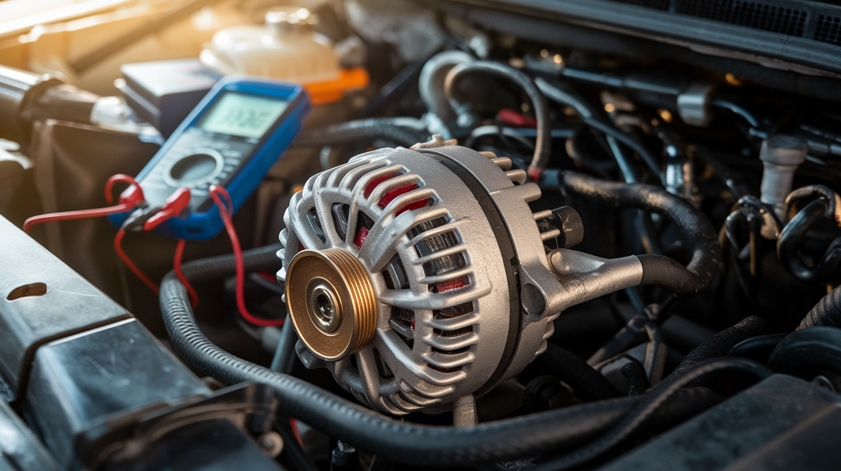
A. Dimming or flickering lights
One of the most noticeable signs of a failing alternator is dimming or flickering lights, both inside and outside your vehicle. As the alternator struggles to maintain a consistent power supply, you may observe:
- Headlights that appear dimmer than usual, especially when idling
- Dashboard lights that flicker or dim intermittently
- Interior lights that seem weaker or pulse irregularly
This phenomenon occurs because the alternator isn’t generating enough power to keep up with the vehicle’s electrical demands, causing fluctuations in the power supply to various components.
B. Battery warning light on dashboard
Most modern vehicles are equipped with a battery warning light on the dashboard. This light, often shaped like a battery, can indicate issues with the charging system, including alternator problems. When illuminated, it suggests that:
- The alternator isn’t producing enough voltage
- There’s a problem with the alternator’s voltage regulator
- The battery isn’t receiving proper charge
It’s crucial not to ignore this warning light, as it could be an early indicator of impending alternator failure.
C. Strange noises from the engine bay
Unusual sounds emanating from your engine bay can be another telltale sign of alternator issues. These noises may include:
- Grinding or whining sounds
- Intermittent squealing, especially when accelerating
- Rattling noises that increase with engine speed
These sounds often result from worn bearings, loose pulleys, or other mechanical issues within the alternator assembly.
| Noise Type | Possible Cause | Action Required |
|---|---|---|
| Grinding | Worn bearings | Immediate inspection |
| Squealing | Loose belt | Belt tightening or replacement |
| Rattling | Loose components | Inspection and fastening |
D. Electrical system malfunctions
As the alternator’s performance degrades, you may notice various electrical system malfunctions:
- Power windows operating slower than usual
- Radio or infotainment system cutting out or resetting
- Heated seats or other auxiliary features working intermittently
- Air conditioning system struggling to maintain temperature
These issues arise because the alternator can’t provide sufficient power to all electrical components simultaneously, leading to prioritization of essential systems over comfort features.
Visit website: Autobiography Zone
E. Difficulty starting the vehicle
While starting problems are often associated with battery issues, a failing alternator can also be the culprit. You might experience:
- The engine cranking slowly when trying to start
- Needing multiple attempts to start the vehicle
- The car starting fine in the morning but struggling later in the day
This occurs because a faulty alternator fails to recharge the battery properly during operation, leaving insufficient power for the next start-up.
Now that we’ve covered the signs of a failing alternator, it’s important to understand how to maintain and care for this crucial component to prevent premature failure and ensure your vehicle’s electrical system remains in top condition.
Alternator Maintenance and Care
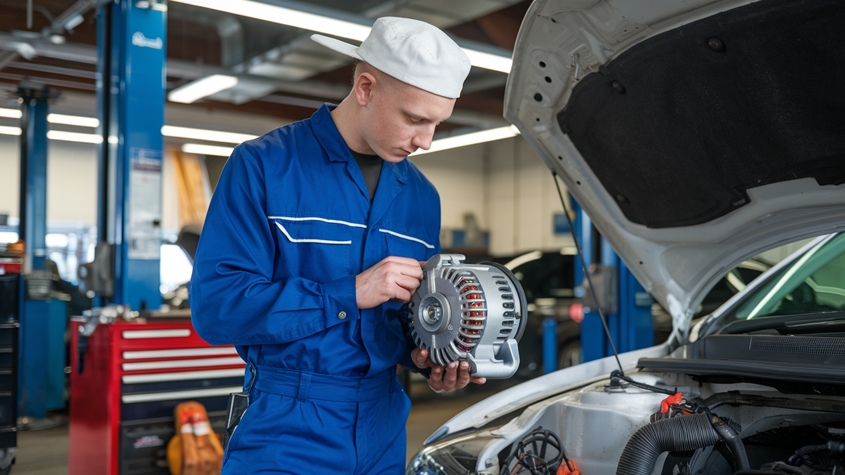
Regular inspections
Regular inspections are crucial for maintaining the health and longevity of your vehicle’s alternator. By incorporating these checks into your routine maintenance schedule, you can catch potential issues early and prevent costly breakdowns.
Here’s a checklist of items to inspect during your regular alternator maintenance:
- Belt condition and tension
- Electrical connections
- Pulley alignment
- Unusual noises
- Battery voltage
To ensure you’re conducting thorough inspections, follow this step-by-step process:
- Visually inspect the alternator belt for cracks, fraying, or glazing
- Check belt tension – it should have about 1/2 inch of play
- Examine all electrical connections for corrosion or looseness
- Listen for any grinding or whining noises when the engine is running
- Use a multimeter to test battery voltage with the engine off and running
| Engine State | Ideal Battery Voltage |
|---|---|
| Off | 12.6V |
| Running | 13.7V – 14.7V |
Keeping the battery connections clean
Clean battery connections are essential for optimal alternator performance. Corrosion and dirt buildup can impede the flow of electricity, causing unnecessary strain on your alternator. Here’s how to keep your battery connections in top shape:
- Safety first: Wear gloves and eye protection
- Disconnect the battery, starting with the negative terminal
- Inspect terminals and cables for corrosion
- Clean terminals and cable ends with a wire brush
- Apply a thin layer of dielectric grease to prevent future corrosion
- Reconnect the battery, starting with the positive terminal
Pro tip: Mix a paste of baking soda and water to neutralize and clean stubborn corrosion.
Avoiding overloading the electrical system
Overloading your vehicle’s electrical system can put excessive strain on the alternator, potentially leading to premature failure. To avoid this, consider the following tips:
- Limit the use of high-draw accessories when the engine is idling
- Upgrade to LED lights to reduce electrical load
- Install a capacitor if you have a high-powered audio system
- Use power inverters sparingly and only when necessary
- Ensure all aftermarket electrical accessories are properly installed
By following these maintenance practices, you can significantly extend the life of your alternator and maintain optimal vehicle performance. Remember, a well-maintained alternator not only ensures reliable starting and operation of your vehicle but also protects other electrical components from potential damage due to voltage fluctuations.
Now that we’ve covered the essential aspects of alternator maintenance and care, let’s explore what to do when your alternator reaches the end of its lifespan and needs replacement.
Replacing Your Alternator

A. When replacement is necessary
Knowing when to replace your alternator is crucial for maintaining your vehicle’s electrical system. Generally, alternators last between 80,000 to 150,000 miles, but this can vary depending on driving conditions and vehicle make. Here are some key indicators that it’s time for a replacement:
- Dashboard warning light
- Dimming or flickering lights
- Strange noises (grinding or whining)
- Battery issues
- Electrical system failures
If you experience two or more of these symptoms, it’s likely time to replace your alternator.
B. DIY vs. professional replacement
Deciding between DIY and professional replacement depends on your mechanical skills, tools, and time availability. Let’s compare the two options:
| Aspect | DIY Replacement | Professional Replacement |
|---|---|---|
| Cost | Lower (parts only) | Higher (parts + labor) |
| Time | Varies (4-8 hours for novices) | Typically 1-3 hours |
| Skill Required | Moderate to High | Not required |
| Tools Needed | Specialized tools may be necessary | Provided by professionals |
| Warranty | Limited to parts | Often includes labor warranty |
| Risk | Higher chance of mistakes | Lower risk, experienced technicians |
For those with mechanical experience and proper tools, DIY replacement can be a cost-effective option. However, for most drivers, professional replacement ensures proper installation and often comes with additional warranties.
C. Choosing the right alternator for your vehicle
Selecting the correct alternator is crucial for optimal performance. Consider these factors:
- Vehicle make, model, and year
- Engine size
- Amperage output
- OEM vs. aftermarket options
- Warranty coverage
To ensure compatibility, use your vehicle’s VIN or consult with a parts specialist. It’s often advisable to choose an alternator with slightly higher amperage than the original to accommodate additional electrical accessories.
D. Cost considerations
The cost of replacing an alternator can vary significantly based on several factors:
- Vehicle make and model
- Alternator quality (OEM vs. aftermarket)
- Labor costs (if professionally installed)
- Additional parts needed (e.g., belts, tensioners)
On average, alternator replacement costs can range from $200 to $800. Here’s a breakdown of potential costs:
- DIY replacement: $150 – $400 (parts only)
- Professional replacement: $400 – $800 (parts and labor)
High-end or luxury vehicles may incur higher costs due to specialized parts and labor requirements.
When budgeting for alternator replacement, consider the long-term benefits of investing in a high-quality part. A reliable alternator can prevent costly electrical system failures and extend the life of other components like your battery and starter.
Now that we’ve covered the essentials of replacing your alternator, let’s explore some exciting developments in alternator technology and what the future holds for this crucial component.
Alternator Innovations and Future Trends
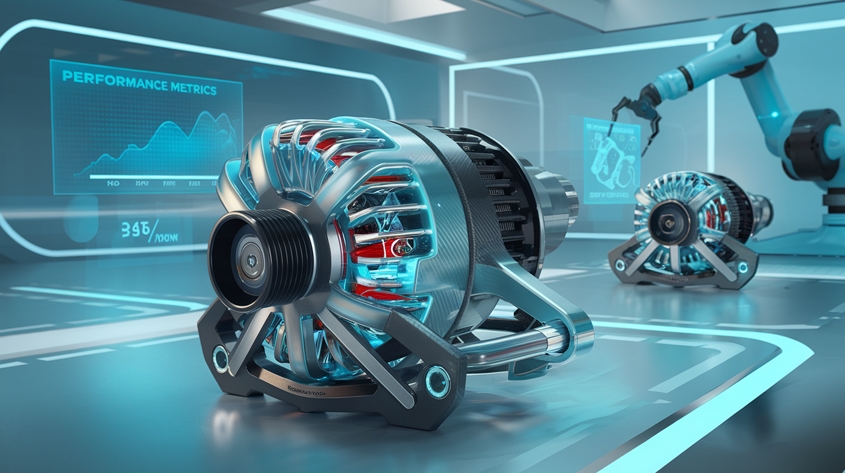
High-efficiency alternators
As vehicle technology continues to evolve, alternators are becoming increasingly efficient. High-efficiency alternators are designed to reduce fuel consumption and improve overall vehicle performance. These advanced alternators typically feature:
- Improved magnetic materials
- Enhanced cooling systems
- Optimized rotor and stator designs
Let’s compare traditional alternators with high-efficiency models:
| Feature | Traditional Alternator | High-efficiency Alternator |
|---|---|---|
| Efficiency | 50-60% | 70-80% |
| Weight | Heavier | Lighter |
| Heat generation | Higher | Lower |
| Fuel savings | Minimal | Up to 3% |
The adoption of high-efficiency alternators is driven by stricter emissions regulations and the automotive industry’s push for improved fuel economy.
Smart charging systems
Smart charging systems represent a significant leap forward in alternator technology. These systems intelligently manage power generation and distribution, optimizing the vehicle’s electrical system performance. Key features of smart charging systems include:
- Variable voltage control
- Load-dependent charging
- Regenerative braking integration
- Communication with other vehicle systems
Smart charging systems offer several benefits:
- Reduced fuel consumption
- Extended battery life
- Improved electrical system stability
- Enhanced vehicle performance
As vehicles become more electronically sophisticated, smart charging systems will play an increasingly crucial role in managing power demands efficiently.
Alternators in hybrid and electric vehicles
While traditional internal combustion engines rely heavily on alternators, hybrid and electric vehicles have introduced new concepts in power generation and management. In these vehicles, the role of the alternator is often redefined or replaced entirely. Here’s how alternators are evolving in hybrid and electric vehicles:
- Integrated Starter-Generator (ISG): This system combines the functions of an alternator and a starter motor, offering improved efficiency and enabling start-stop technology.
- Regenerative braking systems: These systems capture kinetic energy during braking and convert it into electrical energy, reducing the need for a traditional alternator.
- DC-DC converters: In fully electric vehicles, high-voltage batteries power the vehicle’s systems, with DC-DC converters stepping down voltage for low-power components.
As the automotive industry shifts towards electrification, we can expect to see further innovations in power generation and management systems. These advancements will likely focus on:
- Increased energy recovery efficiency
- Improved power density
- Enhanced integration with other vehicle systems
- Reduced weight and size
The future of alternator technology is closely tied to the broader trends in vehicle electrification and energy efficiency. As we move towards more sustainable transportation solutions, alternators and their evolving counterparts will continue to play a crucial role in powering the vehicles of tomorrow.
10 FAQs
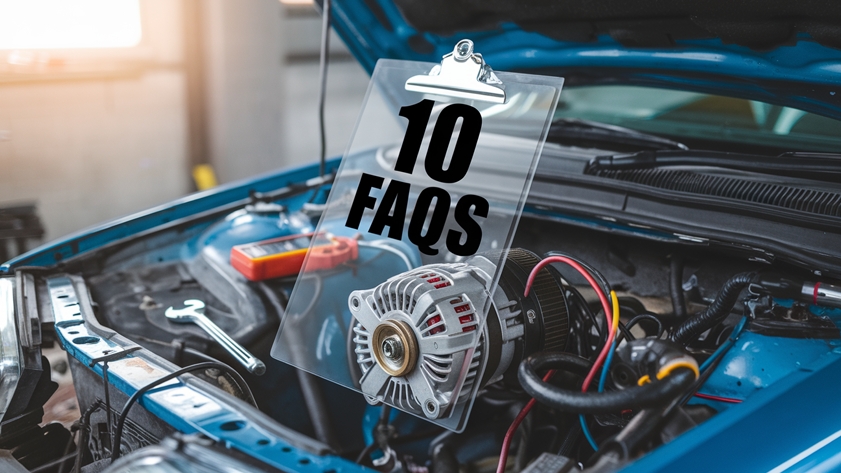
FAQ 1: What is an alternator?
An alternator is a crucial component of a vehicle’s electrical system that generates electricity to power the vehicle’s electrical components and recharge the battery while the engine is running.
FAQ 2: How long does an alternator typically last?
The lifespan of an alternator can vary depending on several factors, but on average, it lasts between 80,000 to 150,000 miles or 7 to 10 years. However, proper maintenance can extend its life.
FAQ 3: What are the signs of a failing alternator?
Common signs include:
- Dimming or flickering lights
- Dead battery
- Strange noises from the engine bay
- Electrical system issues
- Warning light on the dashboard
FAQ 4: Can I drive with a bad alternator?
It’s not recommended to drive with a faulty alternator. Once the battery’s charge is depleted, your vehicle will likely stall and leave you stranded.
FAQ 5: How much does it cost to replace an alternator?
The cost of alternator replacement can vary widely depending on the vehicle make and model. Here’s a general breakdown:
| Cost Factor | Range |
|---|---|
| Parts | $200 – $600 |
| Labor | $100 – $200 |
| Total | $300 – $800 |
FAQ 6: Can I replace an alternator myself?
While it’s possible for those with mechanical experience, it’s generally recommended to have a professional replace the alternator due to the complexity of modern vehicle electrical systems.
FAQ 7: How often should I have my alternator checked?
It’s a good practice to have your alternator checked during regular vehicle maintenance, typically every 60,000 miles or when you notice any electrical issues.
FAQ 8: Can a bad alternator damage other parts of my car?
Yes, a failing alternator can potentially damage other electrical components in your vehicle, including the battery, starter, and various electronic control modules.
FAQ 9: What’s the difference between an alternator and a generator?
While both produce electricity, alternators are more efficient and compact. They produce AC current that’s converted to DC, while generators produce DC current directly.
FAQ 10: Are there any ways to extend the life of my alternator?
To prolong your alternator’s life:
- Keep it clean and free from debris
- Ensure proper belt tension
- Avoid short trips that don’t fully charge the battery
- Address electrical issues promptly
- Limit the use of high-draw accessories when the engine is off
Now that we’ve addressed these common questions about alternators, you should have a better understanding of this vital component in your vehicle’s electrical system. Remember, regular maintenance and prompt attention to any signs of alternator issues can save you from unexpected breakdowns and costly repairs.

The alternator is a crucial component of your vehicle’s electrical system, responsible for keeping the battery charged and powering various electrical components. From understanding its basic function to recognizing signs of failure and performing proper maintenance, knowing about your alternator can save you from unexpected breakdowns and costly repairs.
As automotive technology continues to evolve, so do alternators. With innovations like smart-charging systems and more efficient designs, these components are becoming increasingly sophisticated. Whether you’re a car enthusiast or simply want to keep your vehicle running smoothly, staying informed about your alternator is essential for maintaining your car’s overall health and performance.
Visit website: Autobiography Zone


